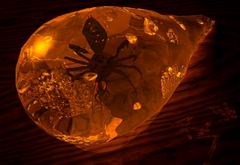The exchange of amber ornaments from the Baltic Sea coast eastwards and northwards into the continental interior has been extensively treated by Lucija Vankina and Ilze Loze. In a more general sense than discussed, ‘specialisation’ may be observed in the relations between the Neolithic inhabitants of the Baltic Sea coast and inland areas, expressed in the exchange of raw materials of limited occurrence and products made from them (amber, flint, slate and, no doubt, also organic materials that have not been preserved). Such a pattern of exchange was evidently stimulated by a need for raw materials to serve basic needs and the wish to obtain items of prestige.
Cash for cars dealer websites:
http://www.picknpull.com/we_buy_cars.aspx
https://www.c4c.bid/
http://forums.iscrapapp.com/
Occasionally found in the literature are remarks that particular groups may have partially or completely controlled certain stages in amberworking and amber exchange. Discussing amberworking in the Lake Lubans Basin in the Late Neolithic, Ilze Loze says that the inhabitants of this area, who obtained unworked amber through exchange with the people living on the shore of the Litorina Sea, themselves organised the processing of amber, intercepting this exchange process and allowing only a flow of finished products to the east, north-east and south-east, thus withdrawing unworked amber from circulation as an item of exchange between tribes. So we see one of the aspects associated with specialisation – control over resources. Actually, this raises the wider question of the degree and character of organisation and regulation in activities relating to amber as a major exchange equivalent. How the production of amber artefacts was organised at Sarnate? Such a study may shed more light on the socio-economic significance of amber in the Neolithic, and on intra community relations at Sarnate and contemporary sites.

Basing on the evidence from Sarnate, Vankina reconstructed the overall process of amberworking. Mazurowski has studied amber processing in depth, analysing finds from Rzucewo Culture sites at the Vistula Gulf in north-eastern Poland.
Larger lumps of amber were sometimes divided into smaller pieces. Experimental work on the Polish material by Mazurowski suggests that this was accomplished by splitting, using stone, bone or horn tools, and also by cutting with a thread.
The selected amber lump was first shaped into a blank by flaking. The flaking technique is similar to flint retouch, and Vankina suggests that amber and flint would have been processed by one and the same craftsworker. Mazurowski reports that flint tools would have been used for flaking amber.